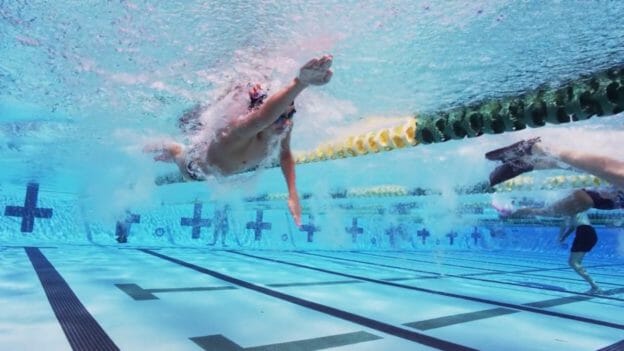
Do Air Bubbles really make us faster Swimmers?
I have to admit when Masters swimmer, Kris, who is also a marine researcher in the Florida Keys, stopped me one day during a workout and asked me if the air bubbles under the swimmer’s bodies made them faster, I didn’t know the answer. I’d never thought about it.
When asked to explain he described the air bubbles he noted under Chinese swimmer Sun Yang’s body after each breath in his freestyle. When I watched the videos of Sun Yang, I could see him release quite a bit of air from his nose after each breath. The bubbles then followed his body underneath the water until they could find their way to the surface. Not only did I see those bubbles with Sun Yang, but with every elite swimmer I observed in fly, free, and breaststroke right after the breath. So now I was really curious.
Kris described how the Emperor Penguins in the Antarctic would spurt quickly out of the water onto the ice to escape the Leopard seals by releasing trapped air bubbles from under their feathers. The air bubbles reduce their drag in the water and enable them to swim faster.
Later, we tested this theory in the Florida Keys using our Drag/Propulsion meter by towing a swimmer in a streamline position across a 50-meter pool at 2.3 m/sec. First, we measured the drag with the swimmer holding his breath. Then we repeated the study while he released the air from his lungs through his chest and under his body. Over 200 measurements were taken each time. The result showed an astonishing 9.1% reduction in drag from the release of air bubbles under the body.
This week, we released a Race Club video where we tested the speed of Olympian freestyle ace Brad Tandy, over 10 meters, using our Velocity Meter Technology. First, he swam while holding his breath. Then, we tested him, releasing air bubbles under his chest.
While the results showed only a slight improvement in Brad’s speed by releasing the air bubbles (1.951 m/sec vs 1.947 m/sec), it was still faster. In a 50 sprint, even a few centimeters can make the difference between winning and losing a race.
Next time you swim, pay attention to what you are doing with the air in your lungs after your breath in fly, free, and breaststroke. Don’t hold your breath. Rather, release some of the air through your nose before taking your next breath. Feel the air bubbles under your body. You will swim faster.
Yours in Swimming,
Gary Sr.

